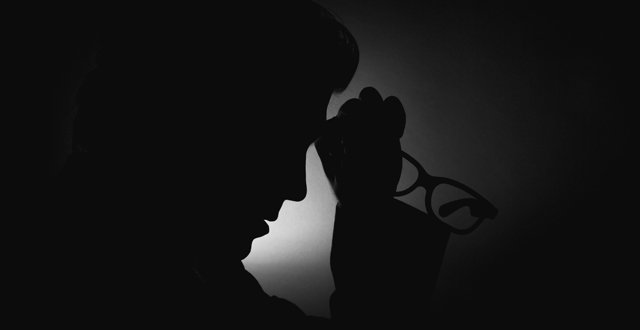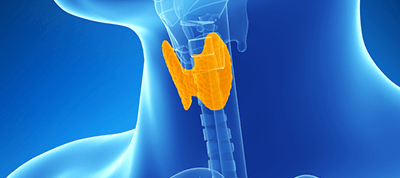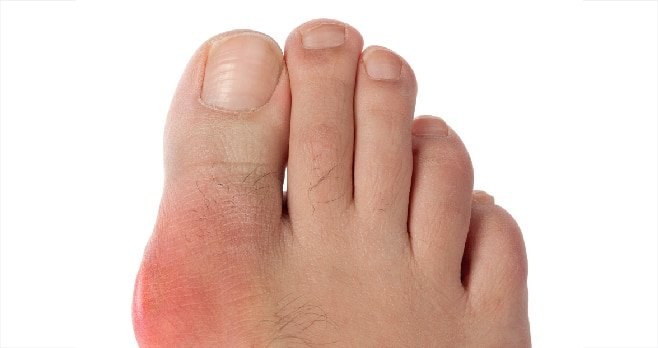<div style=”background: #e8edf0; padding: 10px 15px; margin-bottom: 15px;”>
<strong>Case Report</strong>
Jennifer is a 22-year-old engineering student at University College Dublin. She is the eldest of three sisters and has supportive parents. Her aunt has a well-managed anxiety disorder (Jennifer is unsure exactly which type) but otherwise, there is no family history of mental illness. Jennifer will admit she has always been of a slightly anxious disposition, but not so much as to interfere with her lifestyle. She enjoys two or three glasses of wine with friends on Friday and Saturday nights.
One Sunday evening, shortly after embarking on her final year at university, Jennifer experiences a sudden surge of intense fear. Her heart races and pounds, she feels a tightness in her chest and finds it hard to breathe. Her body trembles markedly, she feels dizzy and nauseous, and she starts to perspire. She feels suddenly detached from the world and wonders if she is about to die. With the aid of her flatmate, she sits down and focuses on her breathing and within 15 minutes, the experience has passed, leaving her exhausted.
<p class=”referencesonrequestMIstyles”>Jennifer has just experienced a panic attack. In the months that follow, these recur unpredictably up to several times daily. She fears embarrassment and, when she finally experiences an attack in the lecture theatre (in front of her fellow students), she decides it is time to seek help. She visits her GP, who suspects panic disorder. He refers her to a cognitive behavioural therapist and prescribes fluoxetine, beginning at a low dose and increasing gradually. He advises Jennifer to avoid alcohol where possible, and offers to refer her to a psychiatrist should her symptoms worsen. Jennifer’s panic attacks gradually become less intense and less frequent until eventually, they disappear completely.
</div>
Our anxiety does not empty tomorrow of its sorrows,” says the 19th Century Baptist preacher Charles Haddon Spurgeon, “but only empties today of its strengths”. He is correct, of course, but anxiety is still something to which most of us can relate, particularly in our increasingly hectic modern landscape. We all have our daily coping strategies, but what happens when anxiety becomes pathological? Enter the anxiety disorders, a range of psychiatric conditions characterised by an unpleasant emotional state that occurs when the neurophysiological architecture responsible for threat detection, assessment and response goes into overdrive. As we know, anxiety disorders are common, affecting around 3.6 per cent of the world’s population, according to the World Health Organisation (WHO).
The <em>American Heritage Medical Dictionary</em> defines anxiety as “a state of intense apprehension, uncertainty and fear resulting from the anticipation of a threatening event or situation, often to a degree that the normal physical and psychological functioning of the affected individual is disrupted” (2007, p38). It is noteworthy that fear and anxiety are two different things; while fear is the emotional response to a real or perceived threat, anxiety is the anticipation of a future threat. The diagnosis of an anxiety disorder requires the use of the WHO’s <em>International Classification of Diseases</em> (<em>ICD-10</em>) or the American Psychiatric Association’s <em>Diagnostic and Statistical Manual</em> (<em>DSM-5</em>). This article is based mostly on the latter. The diagnosis and classification of an anxiety disorder is often based on the underlying trigger and the nature of the anxiety response itself. In order to distinguish an anxiety disorder from normal levels of worry and physiological arousal, the symptoms must be out of proportion to the trigger, as well as being persistent and causing sufficient distress to impact social and occupational functioning.
<h3 class=”subheadMIstyles”>Categories of anxiety disorder</h3>
A specific phobia is defined by the existence of fear or anxiety in the presence of a particular object or situation (termed the phobic stimulus, for example spiders, blood, flying, and so forth). This fear or anxiety is markedly out of proportion to the actual threat posed and leads to avoidance of the phobic stimulus. The 12-month prevalence of specific phobias in Europe is around 6 per cent, while the disorder is thought to be less prevalent in older people and men (F:M=2:1). The disorder typically develops in early childhood and may follow an episode of traumatic or media exposure to the phobic stimulus. Many sufferers, indeed, are unsure of the origin of their phobia. Specific phobias that persist into adulthood are unlikely to remit spontaneously.
What used to be termed ‘social phobia’ is now termed <span style=”text-decoration: underline;”>‘social anxiety disorder’ (SAD)</span>. It manifests as fear or anxiety with reference to social situations, including the fear of being seen to be anxious, or the fear of being humiliated, embarrassed or rejected. As with the specific phobias, avoidance behaviour is part of the clinical picture. SAD, in relation to performance, must last for a minimum of six months. The European prevalence of SAD is estimated at 2.3 per cent and is thought to be higher in younger people and in females. The age of onset is usually around 13 years, typically in a shy child or following an adverse life event or stressful situation. Patients presenting for the first time in adulthood tend to experience a more persistent disorder, with 60 per cent still symptomatic after several years if untreated.
<span style=”text-decoration: underline;”>Agoraphobia</span> is not quite how the public conceptualises it. Rather than being a fear specifically of open spaces per se, it is a consistent fear of any situation in which the individual feels exposed and from which escape would be difficult should a panic attack occur. Literally translated, agoraphobia means ‘fear of the marketplace’. As is the case with the other anxiety disorders, agoraphobia leads to avoidance of the stressful situation, for example by remaining indoors. The annual prevalence is estimated at 1.7 per cent and, once again, the disorder is commoner in younger people and occurs twice as often in women as in men. The median age of onset is 35 years and, if untreated, the disease will typically chart a persistent and chronic course.
<span style=”text-decoration: underline;”>Panic disorder</span> involves recurrent, unexpected panic attacks. The latter is a surge of intense fear typically accompanied by the discomfort of palpitations, chest pain, sweating, trembling, sobbing, choking, nausea, dizziness, paraesthesia and so forth. Associated psychological symptoms include derealisation, depersonalisation, fear of losing control and fear of dying. Anxiety about experiencing a further panic attack can, ironically, trigger one. The frequency and intensity of panic attacks may vary within individuals. Once again, avoidance behaviours are typically seen. The annual prevalence in Europe is estimated at 2-to-3 per cent, and the illness is again twice as common in females. The median range of onset is somewhere between 20 and 24 years, with first presentation rare above the age of 45 years. The course of the illness, while it waxes and wanes naturally, becomes chronic if untreated and is a risk factor for suicide.
<span style=”text-decoration: underline;”>General anxiety disorder</span> is defined by an uncontrollable and irrational worry across a number of settings and present most days over a six-month period. It is associated with at least three symptoms from a list that includes restlessness, hypervigilance, ease of fatigue, impaired concentration, irritability, muscle tension and sleep disturbance. Symptom severity tends to wax and wane in many individuals. The prevalence is around 2.9 per cent in Europe, with a female-to-male ratio of 2:1. Understandably, the illness tends to manifest itself in individuals with a neurotic temperament and a tendency to behavioural inhibition and harm avoidance.
<span style=”text-decoration: underline;”>Obsessive-compulsive disorder (OCD)</span> has two essential features, namely obsessions and compulsions. Obsessions are a person’s own repetitive and distressing thoughts, ideas or images, which are so unpleasant the person tries (often unsuccessfully) to resist. Compulsions are repeated acts or rituals performed in an attempt to neutralise the anxiety associated with the obsessions. The symptoms typically waste a lot of time and interfere with the person’s ability to lead a normal life. According to the <em>ICD-10</em>, either obsessions, compulsions or both must be present on most days over a period of at least two weeks if a diagnosis of OCD is to be made. OCD exists in up to 3 per cent of the population, and is slightly more common among women. The average age of onset is around 20 years, but may be younger, as there is often a delay from the occurrence of symptoms to the seeking of treatment. While the diagnosis is usually a clinical one based on a thorough assessment by a suitably-qualified medical specialist, some helpful questionnaires exist, such as the Yale-Brown Obsessive Compulsive Scale (YB-OCS).
Finally, <span style=”text-decoration: underline;”>post-traumatic stress disorder (PTSD)</span> arises after an exceptionally threatening event outside the range of normal experience. Symptoms typically include a repeated reliving of the trauma, flashbacks, marked irritability, hyperarousal, avoidance behaviours, insomnia and other symptoms. In Europe, the 12-month prevalence is estimated at around 1 per cent, compared with 3.5 per cent in the US. PTSD can vary widely in intensity and duration, and may last from months to years. The nature of the trauma will also impact the subsequent development and course of the PTSD, with victims of intentional assault often enduring a more intense illness.
<h3 class=”subheadMIstyles”>Management of anxiety disorders</h3>
Anxiety is a normal component of the human condition that has undoubtedly been essential for our survival as a species. As such, the diagnosis and classification of an anxiety disorder requires a thorough history from the patient. Anxiety may first present as one or more physical health complaints in the context of hyperarousal of the sympathetic nervous system. Knowledge of the physiological mechanisms underpinning the physical manifestations of anxiety can thus allow the clinician to provide psychoeducation and reassurance for patients who are often very worried about their physical health and sceptical about a psychiatric explanation. A good assessment will consider the extent of the distress and functional impairment, the effects (where present) of comorbid illness and substance misuse, and any response to previous treatments. In treating anxiety disorders, it is important to consider the guidance of the UK’s National Institute for Health and Care Excellence (NICE). The <em>Maudsley Prescribing Guidelines in Psychiatry</em> also provides pragmatic, evidence-based advice on the pharmacological treatment of anxiety disorders.
The NICE guidance recommends a stepped-care approach to treating anxiety, beginning with treatment of the primary disorder. Generally, the first-line treatment for anxiety disorders is psychological. Cognitive behavioural therapy (CBT) is often more effective than pharmacological therapy, depending on the clinical aspects in question, the patient’s suitability and the availability of an appropriately-trained therapist. Pharmacological therapy is also effective, especially where there is comorbid depression, a failure of CBT alone or severely debilitating symptoms.
Most pharmacological evidence for the treatment of anxiety disorders supports the use of selective serotonin reuptake inhibitors (SSRIs). Given the potential for antidepressants to transiently increase anxiety levels on commencement (and given the somatic presentation of some individuals’ experience of anxiety), it is sometimes appropriate to ‘start low and go slow’ in terms of dosage. It would not be unusual to begin at half the normal starting dose, noting that response may take up to six weeks. Fluoxetine may be the most effective SSRI, with sertraline the best tolerated. It is, naturally, important to monitor for side-effects. Treatment might typically continue for at least a year, particularly as this treatment may prevent the onset of depression.
The treatment of specific anxiety disorders is outlined in the NICE guidance. For panic disorder, benzodiazepines should not be used. Instead, an SSRI is used as the first-line medication. If this is contraindicated or ineffective, tricyclic antidepressants (TCAs), such as imipramine or clomipramine, can be useful. The guidelines also suggest that self-help approaches based on CBT principles should be encouraged in patients. In generalised anxiety disorder, benzodiazepines should not be used beyond two-to-four weeks. An SSRI is typically the first-line medication, while serotonin-noradrenaline reuptake inhibitors (SNRIs) such as venlafaxine represent an alternative. The GABA analogue pregabalin has an evidence base but may be more addictive than originally thought. High-intensity psychological interventions and (as with panic disorder) self-help strategies based on CBT principles are advised in the guidelines.
For OCD, treatment usually involves a combination of psychology, medication and general supportive measures. Psychological strategies include CBT, comprised of behavioural techniques, such as graded exposure and response prevention, and cognitive ones such as thought-stopping. Useful medications include SSRIs like fluoxetine, or alternatively the TCA clomipramine. If the response remains suboptimal, the addition of an antipsychotic might be considered. It is noteworthy that a combination of medication and psychology is usually more effective than either method alone.
As we can see, benzodiazepines are normally only indicated for the short-term treatment of severe, disabling anxiety. Not only may there be adverse effects, such as paradoxical disinhibition and decreased psychomotor performance (of particular importance if a patient normally drives or operates machinery), but benzodiazepines also carry a significant risk of addiction. This may develop in as little as 14 days, while withdrawal effects after long-term use can include rebound anxiety, insomnia, agitation, nausea, blurred vision and other symptoms. Indeed, successful withdrawal from benzodiazepines may require a switch to the equivalent dose of diazepam, followed by a very gradual reduction from that point onwards.
Of note is buspirone, a partial agonist of serotonin, which may be used instead of benzodiazepines in the short-term management of, for example, generalised anxiety disorder. Buspirone is reported not to cause significant sedation or cognitive impairment and, moreover, is relatively free from dependence and withdrawal symptoms. Unfortunately, its anxiolytic effect occurs only gradually — taking up to three weeks — thus giving it little advantage over antidepressants.
Although many patients with anxiety disorders can be treated in the primary care setting, some will require referral to specialist psychiatric care. This may be the case, for example, where CBT (if available) has been offered or initial pharmacological steps taken and yet there is no response after three months. It is also important to consider referral if the patient presents as a high risk to themselves or others, if the illness is severe and disabling or if the diagnosis is unclear and needs more comprehensive evaluation. In the end, a significant proportion of patients will benefit from the right treatment approach.
<p class=”referencesonrequestMIstyles”><strong>References available on request</strong>










Leave a Reply
You must be logged in to post a comment.